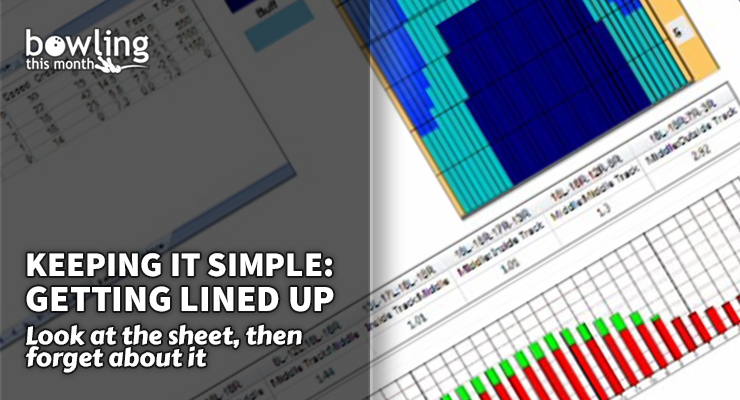Article Contents
- 1. Simplifying the oil pattern sheet
- 1.1. How flat is the oil?
- 1.2. How long is the pattern?
- 1.3. What is the oil volume?
- 2. System for getting lined up
- 3. Watch the field, but keep it simple!
Note: This article is only available to Bowling This Month subscribers.
First things first: ignore the lane pattern sheet. It simply doesn’t matter once the lights come on. Let your ball be your guide! I should end the article here, but I guess we’ll keep going…
It is important to remember that just because the oil pattern sheet says something, or just because the mechanic gave you some super-secret insight, it could all be wrong. What if they pushed the wrong button? What if the topography overwhelms the pattern, which often happens? What if the machine broke and they had to use a spare (pun intended)? If you must look at the graph and interpret the information, go ahead do so, but do it with an open mind. Still test multiple angles, balls, speeds, etc. Hopefully, you have some form of system for this, and, if not, I’ll be going through this a bit later.
If there is a certainty in bowling, it’s that bowlers will always look at the oil pattern sheet, given the chance. This isn’t bad, but you’ve got to keep it simple. Simplifying a lane pattern sheet lets us focus on the key areas that have the most influence, but without causing us to dive in so hard that we get wrapped up in it. It is important to allow our minds to stay open to the possibility that it may play nothing like what the sheet suggests.
Let’s start with how to look at a pattern sheet to get some information, and then how to use an on-lane process to figure out what the lane is really doing.
Simplifying the oil pattern sheet
Whether you are looking at a Brunswick or a Kegel lane pattern sheet does not matter. Understanding how to interpret the information given is what matters. I believe there are three things that make up the majority of how the oil pattern can affect your ball motion. However, remember ...
Already a premium member? Click here to log in.


